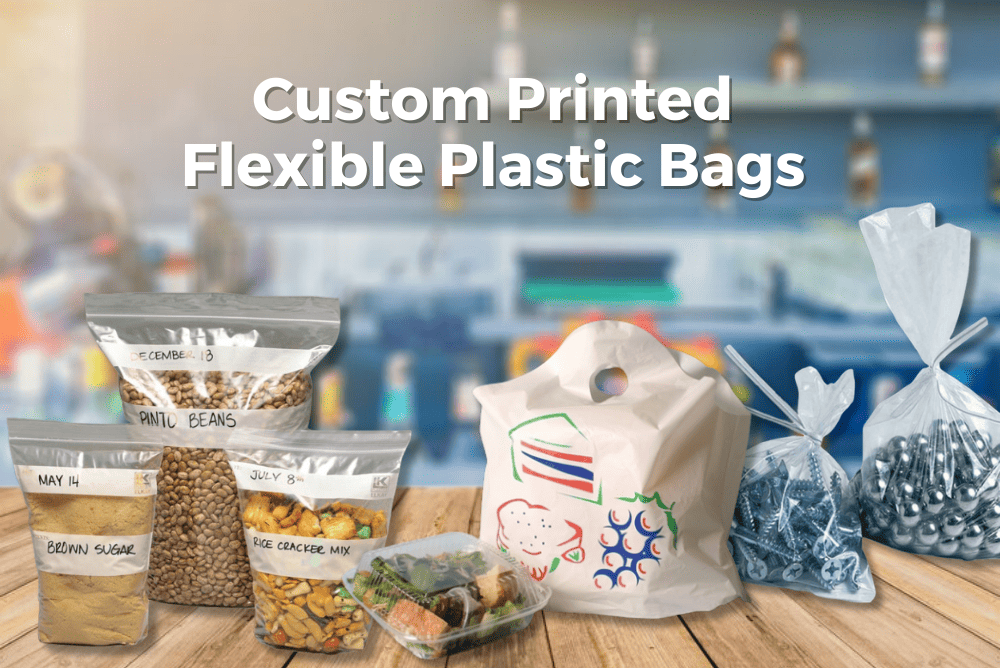
The plastic packaging industry segment has evolved over the years addressing several challenges not only pertaining to specific client requirements but also developing sustainable packaging solutions that are safe for the environment. This comprises developing recyclable as well as flexible packaging solutions made from sturdy thermoplastics. These packages take the form and shape of the contents inside or can be reasonably stretched to accommodate high volumes or odd-shaped content. Also, most packaging types such as airtight packaging, standup pouches, zippers, spouts, and more can be resealed and hence reused multiple times. With the increasing focus on sustainability, many businesses prefer recycled plastic packages to pack their products. This post focusses on the growth and prospects of the wholesale flexible plastic packaging market, especially across the US.
Rigid Packaging vs. Flexible Packaging
Rigid packaging in the form of glass, tin, and later plastic jars has been in use for decades. While it is sturdy, it is not flexible as it does not conform to the shape of its contents. While rigid packaging types are extremely durable as well as a sustainable solution for the environment, it does not meet the growing demands in terms of space-confined and lightweight packaging. Hence, while rigid packs and jars are still used for specific products, flexible plastic packaging types have gradually picked up pace over the last few years and account for large market share. Here, tin, glass and other such materials are ruled out and only plastic is used because of its versatility and flexibility. Flexible packaging is used across industries from food & beverage and pharmaceuticals to cosmetics and personal care products, screw, nuts, and other industrial components, and electronics. So, what factors are driving the growth of this market. Let’s find out.
Growth Drivers of the Flexible Plastic Packaging Market
The flexible plastic packaging market is estimated to grow at a compound annual growth rate (CAGR) of 4.8% from 2022 to 2030. The market size in 2022 was $182.4 and is projected to reach $264.9 by 2030. These stats are based on a research report by Markets and Markets. Here are some challenges and driving factors for the growth of the flexible packaging market.
Challenges that Present Opportunities to Foster Innovation
Here are some challenges that can be turned into opportunities to increase the growth rate of this market.
- These numbers show that while the growth rate is moderate, the prospects are high for flexible packaging across industries as the demand is huge.
- The moderate growth rate may be due to other factors such as the need for establishing plastic recycling infrastructure across the US. A report by Gartener mentions this very point about having multiple, accessible, and affordable plastic recycling units.
- The plastics used may be technically recyclable, but it may take a while for this idea to become the new normal and pick up pace. There are some challenges in terms of polymer films getting stuck in recycling machines; however, research to overcome this is already being done. We can say that this market is in its nascent stage but has great growth prospects.
Growth Drivers for Flexible Plastic Packaging
Here are the driving factors for the growth of this market.
- Flexible packaging comprises the best possible combination of film and plastic materials in terms of sustainability, physical and chemical properties, safety of products in transit, storage, and shipping, and more. It also helps save space. This is one of the growth drivers.
- The demand for sustainable packaging and the increasing awareness to shun single-use plastic are some of the main growth drivers.
- While flexible packaging finds applications across industries, the food industry accounts for the largest share. This is because of the benefits this style of packaging offers in terms of increased shelf life and freshness of food contents.
- Changing patterns in consumer behavior and preference is also one of the drivers. End consumers prefer packages that can be opened and closed to be eaten on the go without hampering the food quality. Also, these packages such as standup packs and pouches can be resealed which prevents spillage and wastage.
- These packs once resealed tightly protect the food from moisture, exposure to oxygen, and so on which prevents perishing and spoilage.
- The fact that these packages are lightweight and portable also adds to the list of growth drivers.
- The growing trend of e-commerce and e-retail is also a growth driver as flexible packaging offers convenience and is easy to transport or deliver.
- Cost efficiency is an important growth driver. Flexible plastic packaging is cost-effective in the long run, considering all the parameters such as safety of contents, reuse, and ongoing innovation, which may help achieve further economies of scale.
While the shift from rigid packaging to flexible types is imminent for many products across industries, it is a matter of time till all the possible challenges are met in terms of recycling issues, achieving regulatory compliance, and more. Despite these challenges, many businesses prefer flexible packaging options today. If you are looking for sustainable packaging solutions, ensure you partner with a reliable supplier. Universal Plastic is one of the reliable plastic packaging manufacturers, wholesalers, and suppliers of various types of plastic bags required across industries. They also offer FDA-approved plastic packing solutions with printing and custom options.
